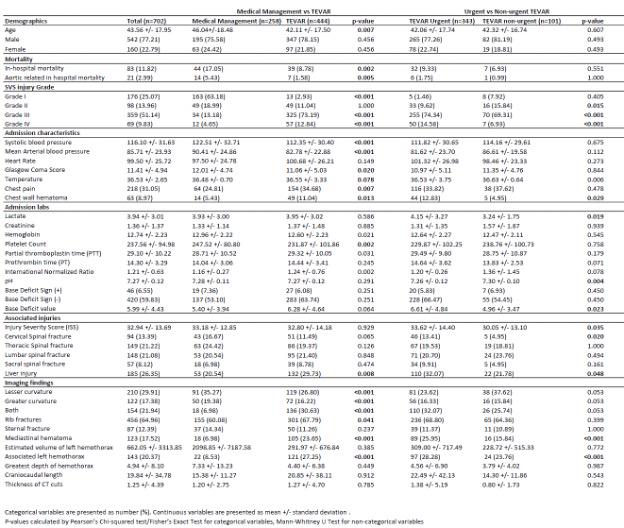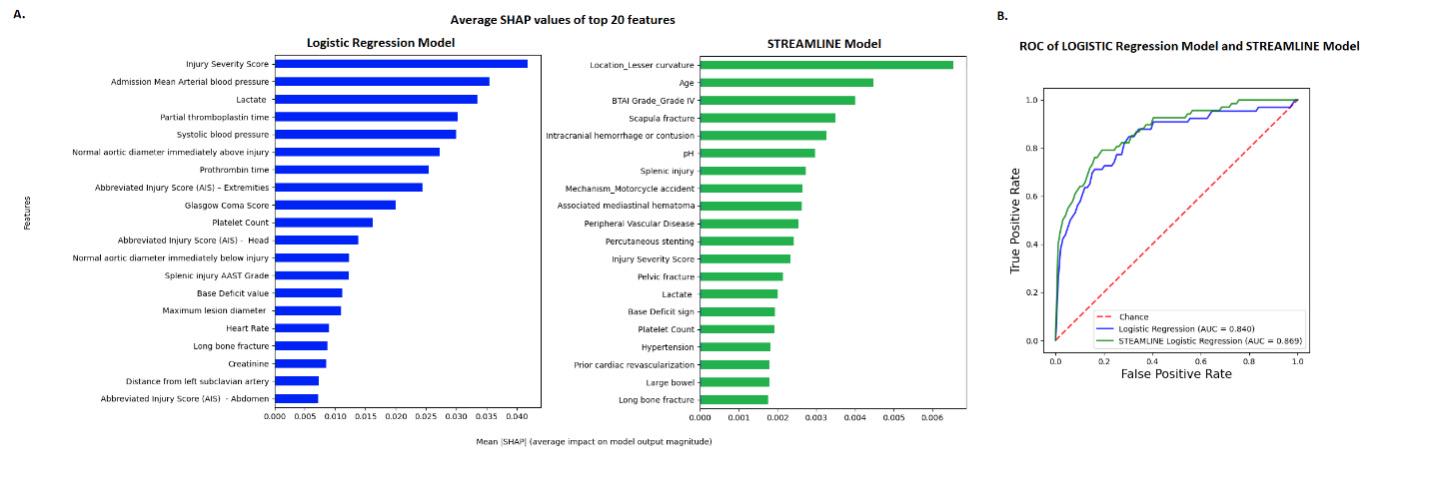Using Machine Learning to Predict Outcomes of Patients with Blunt Traumatic Aortic Injuries
Eileen Lu1, Joseph Dubose2, Mythreye Venkatesan1, Paul Wang1, Benjamin Starnes3, Naveed Saqib4, Charles Miller4, Ali Azizzadeh1, Donald Baril1, Elizabeth Chou1
1Cedars-Sinai Medical Center, Los Angeles, CA;2Dell Medical Center, Austin, TX;3University of Washington, Seattle, WA;4UTHealth Houston, Houston, TX
Background: The optimal management of BTAI remains controversial, with experienced centers offering therapy ranging from medical management to TEVAR. We investigated the utility of a machine learning (ML) algorithm to identify risk factor patterns beyond the reach of traditional statistical analysis. Methods: The Aortic Trauma Foundation registry was utilized to examine demographics, injury characteristics, management and outcomes of patients with BTAI. A STREAMLINE (A Simple, Transparent, End-To-End Automated Machine Learning Pipeline Facilitating Data Analysis and Algorithm Comparison) model with imputation, as well as logistic regression (LR) analysis with imputation using chained equations was developed and compared. Results: From a total of 1018 patients in the registry, 702 patients were included in the final analysis. Of the 258 (37%) patients who were medically managed, 44 (17%) died during admission, 14 (5.4%) of which were aortic related deaths. 444 (63%) patients underwent TEVAR and 343 of which underwent TEVAR within 24 hours of admission. Amongst TEVAR patients, 39 (8.8%) patients died and 7 (1.6%) had aortic related deaths. (Table 1) Comparison of the STREAMLINE and LR model showed no significant difference in ROC curves and high AUCs (0.84 and 0.869 respectively) in predicting in-hospital mortality. Unexpectedly, however, the variables prioritized in each model differed between models (Figure 1A-B). The top three variables identified from the LR model were similar to that from existing literature. The STREAMLINE model, however, prioritized location of the injury along the lesser curve, age and aortic injury grade (Figure 1A). Conclusions: Machine learning provides insight on prioritization of variables not typically identified in standard multivariable logistic regression. Further investigation and validation in other aortic injury cohorts are needed to delineate the utility of ML models.
Table 1. Selected demographics and characteristics of patient cohort

Figure 1. A. Variable prioritization based on Shapley values from Logistic Regression and STREAMLINE models B. Receiver operating characteristic curve comparing both models

Back to 2024 Posters


